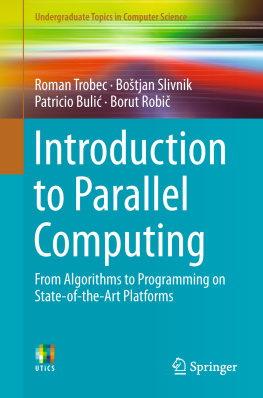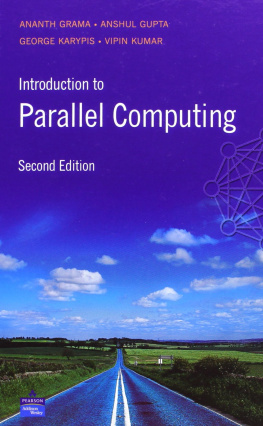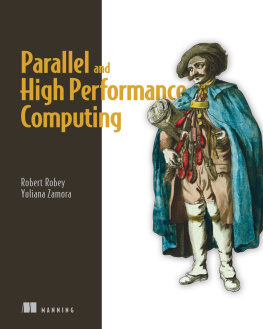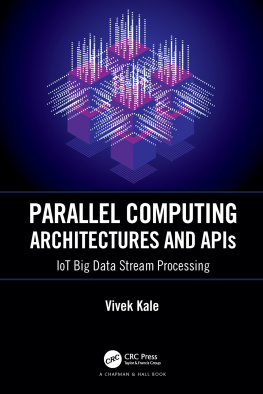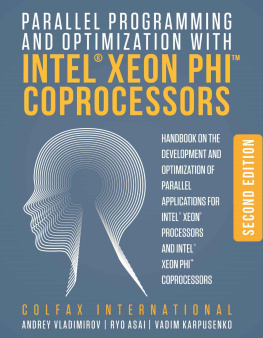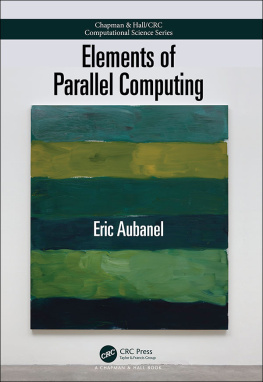Roman Trobec - Introduction to Parallel Computing
Here you can read online Roman Trobec - Introduction to Parallel Computing full text of the book (entire story) in english for free. Download pdf and epub, get meaning, cover and reviews about this ebook. year: 0, publisher: Springer International Publishing, genre: Romance novel. Description of the work, (preface) as well as reviews are available. Best literature library LitArk.com created for fans of good reading and offers a wide selection of genres:
Romance novel
Science fiction
Adventure
Detective
Science
History
Home and family
Prose
Art
Politics
Computer
Non-fiction
Religion
Business
Children
Humor
Choose a favorite category and find really read worthwhile books. Enjoy immersion in the world of imagination, feel the emotions of the characters or learn something new for yourself, make an fascinating discovery.
- Book:Introduction to Parallel Computing
- Author:
- Publisher:Springer International Publishing
- Genre:
- Year:0
- Rating:4 / 5
- Favourites:Add to favourites
- Your mark:
- 80
- 1
- 2
- 3
- 4
- 5
Introduction to Parallel Computing: summary, description and annotation
We offer to read an annotation, description, summary or preface (depends on what the author of the book "Introduction to Parallel Computing" wrote himself). If you haven't found the necessary information about the book — write in the comments, we will try to find it.
Introduction to Parallel Computing — read online for free the complete book (whole text) full work
Below is the text of the book, divided by pages. System saving the place of the last page read, allows you to conveniently read the book "Introduction to Parallel Computing" online for free, without having to search again every time where you left off. Put a bookmark, and you can go to the page where you finished reading at any time.
Font size:
Interval:
Bookmark:
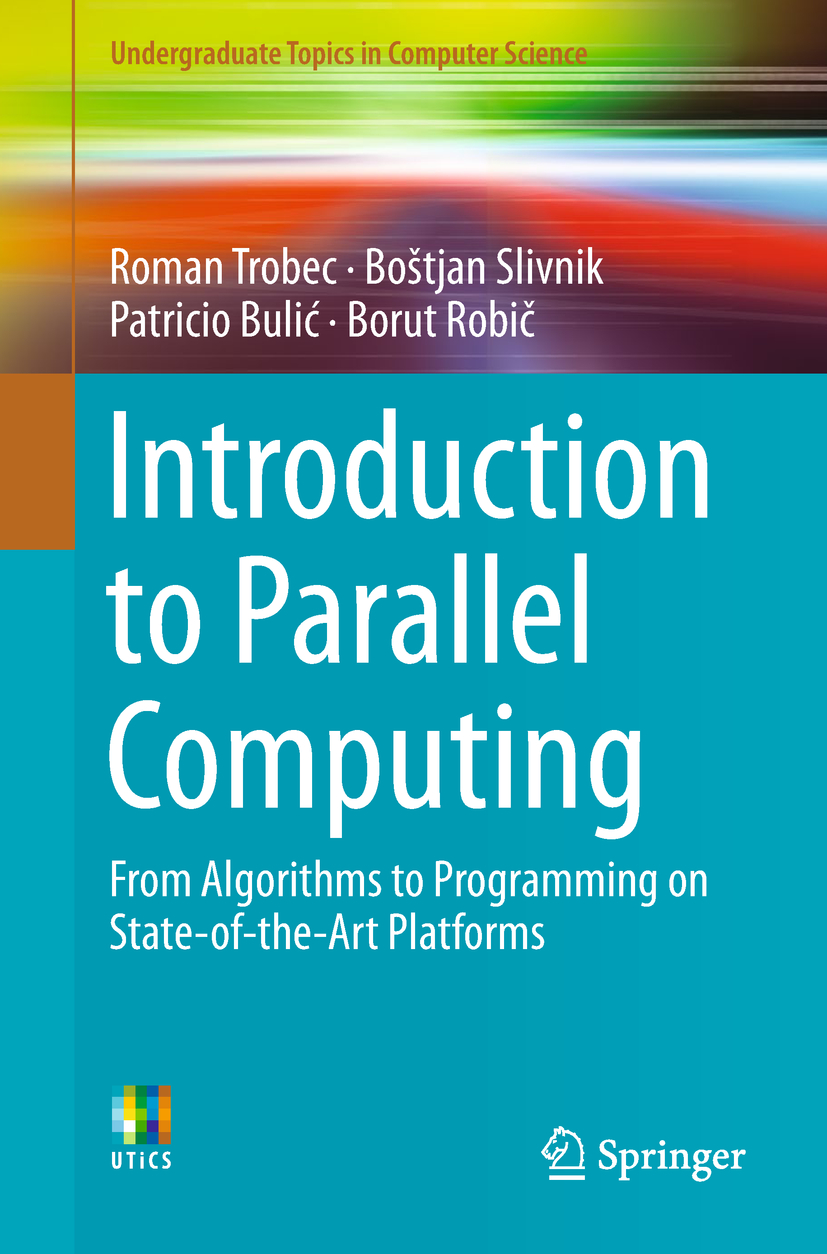
Advisory Board
Samson Abramsky, University of Oxford, Oxford, UK
Chris Hankin, Imperial College London, London, UK
Mike Hinchey, University of Limerick, Limerick, Ireland
Dexter C. Kozen, Cornell University, Ithaca, USA
Andrew Pitts, University of Cambridge, Cambridge, UK
Hanne Riis Nielson, Technical University of Denmark, Kongens Lyngby, Denmark
Steven S. Skiena, Stony Brook University, Stony Brook, USA
Iain Stewart, University of Durham, Durham, UK
Undergraduate Topics in Computer Science (UTiCS) delivers high-quality instructional content for undergraduates studying in all areas of computing and information science. From core foundational and theoretical material to final-year topics and applications, UTiCS books take a fresh, concise, and modern approach and are ideal for self-study or for a one- or two-semester course. The texts are all authored by established experts in their fields, reviewed by an international advisory board, and contain numerous examples and problems. Many include fully worked solutions.
More information about this series at http://www.springer.com/series/7592

This Springer imprint is published by the registered company Springer Nature Switzerland AG
The registered company address is: Gewerbestrasse 11, 6330 Cham, Switzerland
To all who make our lives worthwhile.
This monograph is an overview of practical parallel computing and starts with the basic principles and rules which will enable the reader to design efficient parallel programs for solving various computational problems on the state-of-the-art computing platforms.
The book too was written in parallel. The opening Chap. : Why do we need Parallel Programming has been shaped by all of us during instant communication immediately after the idea of writing such a book had cropped up. In fact, the first chapter was an important motivation for our joint work. We spared no effort in incorporating of our teaching experience into this book.
Part I, Foundations , provides the motivation for embarking on a study of parallel computation (Chap. ) that covers parallel computer systems, the role of communication, complexity of parallel problem-solving, and the associated principles and laws.
Part II, Programming , first discusses shared memory platforms and OpenMP (Chap. ). Each chapter describes the methodology and practical examples for immediate work on a personal computer.
Part III, Engineering , illustrates parallel solving of computational problems on three selected problems from three fields: Computing the number
 (Chap. ).
(Chap. ).
To enable readers to immediately start gaining practice in parallel computing, Appendix A provides hints for making a personal computer ready to execute parallel programs under Linux, macOS, and MS Windows.
Roman Trobec started the idea of writing a practical textbook, useful for students and programmers on a basic and advanced levels. He has contributed Chap. : Final Remarks and Perspectives, and to chapters of Part III.
Botjan Slivnik has contributed Chap. and chapters of Part III.
Patricio Buli has contributed Chap. and chapters of Part III.
Borut Robi has coordinated our work and cared about the consistency of the book text. He has contributed Chap. : Why do we need Parallel Programming.
The spectrum of book topics ranges from implementations to efficient applications of parallel processors on different platforms. The book covers shared memory many-core processors, shared memory multi-core processors, and interconnected distributed computers. Chapters of Parts I and II are quite independent and can be read in any order, while chapters of Part III are related to previous chapters and are intended to be a final reading.
The target audience comprises undergraduate and graduate students; engineers, programmers, and industrial experts acting in companies that develop software with an intention to add parallel capabilities for increased performance; research institutions that develop and test computationally intensive software with parallel software codes; and universities and educational institutions that teach courses on parallel computing. The book may also be interesting and useful for the wider public in the part where basic principles and benefits of parallel approaches are presented.
For the readers who wish to be promptly updated with current achievements in the field of parallel computing, we will maintain this information on the book web page. There, also a pool of questions and homeworks will be available and maintained according to experiences and feedbacks from readers.
We are grateful to all our colleagues who have contributed to this book through discussions or by reading and commenting parts of the text, in particular to Matja Depolli for his assistance in testing the exemplar programs, and to Andrej Brodnik for his fruitful suggestions and comments.
Font size:
Interval:
Bookmark:
Similar books «Introduction to Parallel Computing»
Look at similar books to Introduction to Parallel Computing. We have selected literature similar in name and meaning in the hope of providing readers with more options to find new, interesting, not yet read works.
Discussion, reviews of the book Introduction to Parallel Computing and just readers' own opinions. Leave your comments, write what you think about the work, its meaning or the main characters. Specify what exactly you liked and what you didn't like, and why you think so.

